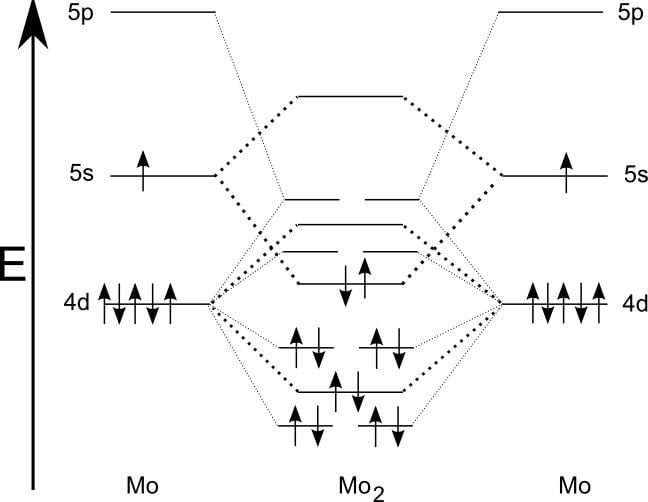 | ||
A sextuple bond is a type of covalent bond involving 12 bonding electrons and in which the bond order is 6. The only known molecules with true sextuple bonds are the diatomic dimolybdenum (Mo2) and ditungsten (W2), which exist in the gaseous phase and have boiling points of 4,639 °C (8,382 °F) and 5,930 °C (10,710 °F). There is strong evidence to believe that there is no element with atomic number below about 100 that can form a bond with a greater order than 6 between its atoms, but the question of possibility of such a bond between two atoms of different elements remains open.
Contents
Dimolybdenum and ditungsten
Dimolybdenum (Mo2) can be observed in the gas phase at low temperatures (7 K) by a laser evaporation technique using molybdenum sheet with, for instance, near-infrared spectroscopy or UV spectroscopy. Like dichromium, a singlet state is expected from dimolybdenum. Higher bond order is reflected in shorter bond length of 194 pm.
Other molecules
Although diatomic Cr2 and U2 have formal structures with twelve-electron bonds, their effective bond orders derived from quantum chemistry calculations are less than 5 (which would be quintuple bonds).
